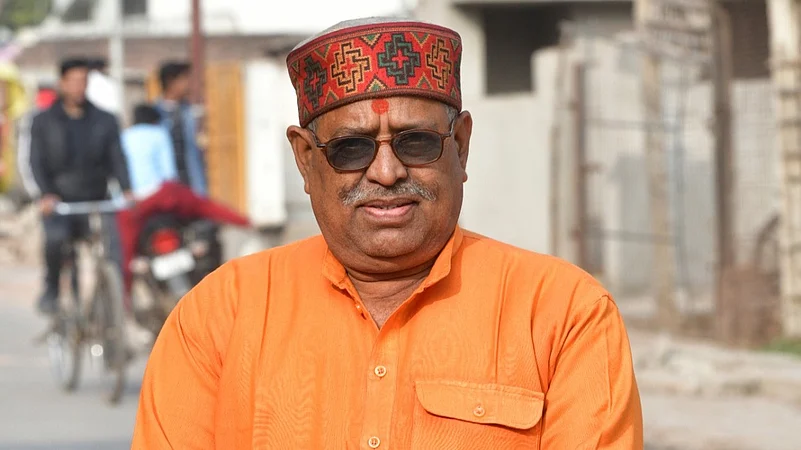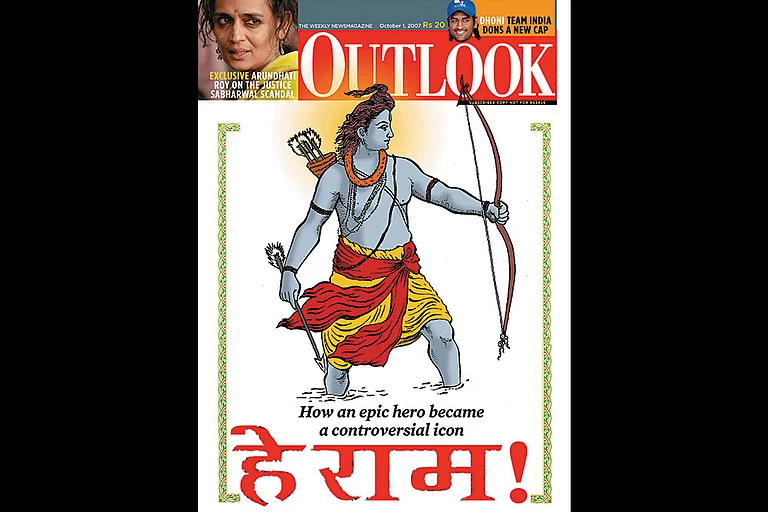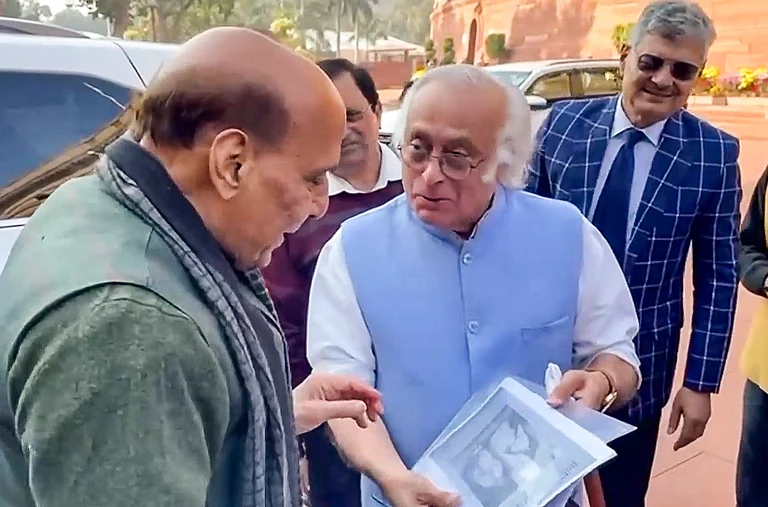“We don't long for progress but find bliss in the embrace of Ram. When the path to divinity eludes us, we usually create or find our own way.” Says, Santosh Dubey, a member of Shiv Sena, was one of the prime accused in the 1992 Babri Demolition Case of Ayodhya.
Santosh Dubey, a key figure involved in the Babri Demolition Case, reflects on the events leading up to the destruction of the Babri Masjid in 1992, sharing vivid details of the meticulous planning and determination that marked that fateful day.
Dubey, now in his late 40s, reveals the historical context that fueled the movement, shedding light on the political undercurrents that drove the demolition mission. He remains unapologetic about his role in the controversial incident and emphasises the deep-rooted commitment of the kar sevaks who participated.
Dubey reveals that the Babri Masjid case unfolded against the backdrop of political and religious developments in India during the late 20th century. When in 1986, a district judge, purportedly acting under orders from Prime Minister Rajeev Gandhi's Office, directed the unlocking of the Babri Masjid gates, allowing Hindu worship and sparking protests from Muslims who established the Babri Masjid Action Committee.
In 1989, the Allahabad High Court ordered the maintenance of the status quo regarding the Babri Masjid. Notably, on November 9, 1989, the Rajiv Gandhi government permitted the Vishwa Hindu Parishad (VHP) to perform the foundation stone-laying ceremony for the Ram temple on the disputed land. The subsequent years witnessed intensified activities, including BJP President L.K. Advani's Rath Yatra in 1990.
In the realm of Lal Krishna Advani's Rath Yatra and the tragic episode of Ayodhya gunfire, where a few kar sevaks met their fate, the Sangh and Vishwa Hindu Parishad, in the aftermath of the loss, acquired a piece of land a few kilometres from the disputed site. There, they laid the foundation of Karsevakpuram.
As a result of the 1990 incidents, on December 6, 1992, a massive crowd, incited by BJP, Shiv Sena and VHP leaders, demolished the Babri Masjid. The aftermath saw communal violence, loss of lives, and the initiation of legal proceedings against those involved. The Liberhan Commission was established in 1992 to investigate the demolition, and subsequent years witnessed legal developments, including the acquisition of land around the Babri Masjid and charges against key figures.
Dubey explains that the movement gained momentum in 1988-89 when the campaign for Ram Shilas began in the state. At that time, he joined Shiv Sena under the leadership of Balasaheb Thackeray, who appointed him as the East UP in-charge. He established connections with local VHP-BJP leaders and Ram Chandra Paramhans, becoming an integral part of the rising movement for the construction of the Ram temple.
The turning point came with LK Advani's yatra from Somnath to Ayodhya and the subsequent call to kar sevaks to assemble in Ayodhya before October 30. Despite the then Chief Minister Mulayam Singh Yadav's efforts to maintain law and order, the mobilization of kar sevaks could not be stopped.
Dubey reminisces about the strategic planning that ensued, involving the recruitment of 5,000 kar sevaks willing to sacrifice their lives for the cause. A form was circulated, urging individuals to sign with their blood if they were committed to the construction of the Ram temple and the demolition of the Babri Mosque. The assembly of this group included 1,000 women, showcasing the widespread support for the mission.
Describing the events of December 6, 1992, Dubey recounts the distribution of hammers, iron rods, and a 500-meter-long rope with hooks. Seventeen teams were formed, each assigned specific duties, and leaders on the dais inspired them with a sense of purpose. He acknowledges the encouragement of Sadhvi Rithambara, who urged them not to come down from the dome until the task was completed.
He explains, “At around 12:00, as the chants of 'Har Har Mahadev' echoed, we moved forward. Being at the forefront, my responsibility as a leader compelled me to take the lead at the gate. Among those trying to stop us were the then ADG Umesh Tiwari and a Pehelwan from Ayodhya's Hanumangarhi. They were trying to dissuade us in the Bihari dialect. When the sword came out Umesh Tiwari and his supporters retreated. No cameras were allowed; it was time to convey to the foreign media that no messages would be sent today, and no recordings would be made.
Addressing us on the stage, some people labelled us as unruly elements tarnishing our movement. They said, 'These people are not here for Lord Ram, they have no purpose, they are followers of Ravana.' But we, undeterred, were there for Ram's work, not political motives. We heard their abuses, but our goal was to accomplish Ram's work today. Some remained positive on the stage, and I think it was around 3:30 or 4:00 when the Babri got Demolished.
As we proceeded, my senses faded. Later, as decisions were made to meet at a nearby place, I was absent. There was a powerful figure in our team, Ravi Shankar Pandey. He searched for me and found me under a piece of concrete, unconscious. My 17 bones were broken; no one thought I was worth saving.
They declared me dead at the district hospital, but some good doctors insisted on checking. They stated, 'No, this person won't die until the temple is built.' I was in a coma. After 22 days in Lucknow, I regained consciousness.
I was kept there for another 3 days and then brought to consciousness. The truth of December 6th unfolded. This was the reality."
When asked about his views on the recent development of Ayodhya, he says “In Ayodhya, a notable change is that even if you wish to have a glass of water, you may need to spend some money. In the past, in Ayodhya, if you mentioned 'jal' (water) to someone, they would also arrange a meal for you. They would offer sweets, and then serve you water. A transformation has occurred; those who came from outside have turned Ayodhya into a commercial centre. People have made Ayodhya a business hub.
On the other hand, there are the original residents of Ayodhya, who are very good people. They neither listen to nor do anything wrong. They have a positive mindset. If they speak the truth, the development changes you see in Ayodhya today, it's for development. This is good, and for this work, we thank Mr. Modi. He has infused new energy into Ayodhya, and it has incurred benefits.
When people from outside come, economic resources will increase, even significant ones. There is a potential threat in the future, but building the Ram Mandir implies development, whether roads are good or not is a separate matter.”



























